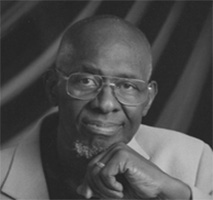Historic Document
Federalist 37 (1788)
James Madison | 1788

Library of Congress, Prints and Photographs Division
Summary
In this installment of The Federalist Papers, James Madison emphasized the enormous challenges that the Constitutional Convention had faced in drafting the Constitution. He did so, in particular, to counter the popular Anti-Federalist criticism that the proposed Constitution had been written in purposely ambiguous language. Madison did not deny that the Constitution featured its share of indeterminacy, but rather explained, through a sophisticated meditation on the relationship between language, constitutionalism, and practice, why this feature was neither avoidable nor a defect. It was not avoidable because human language was incapable of delineating novel, complex objects like those the Framers had sought to outline with absolute precision. But nor was it a defect for whatever remained uncertain or ambiguous in the proposed constitutional system could be worked out in practice.
Selected by

William B. Allen
Emeritus Dean of James Madison College and Emeritus Professor of Political Science at Michigan State University

Jonathan Gienapp
Associate Professor of History at Stanford University
Document Excerpt
With equal readiness will it be perceived, that besides these inducements to candor, many allowances ought to be made for the difficulties inherent in the very nature of the undertaking referred to the convention. …
Not less arduous must have been the task of marking the proper line of partition between the authority of the general and that of the State governments. Every man will be sensible of this difficulty, in proportion as he has been accustomed to contemplate and discriminate objects extensive and complicated in their nature. The faculties of the mind itself have never yet been distinguished and defined, with satisfactory precision, by all the efforts of the most acute and metaphysical philosophers. Sense, perception, judgment, desire, volition, memory, imagination, are found to be separated by such delicate shades and minute gradations that their boundaries have eluded the most subtle investigations, and remain a pregnant source of ingenious disquisition and controversy. The boundaries between the great kingdom of nature, and, still more, between the various provinces, and lesser portions, into which they are subdivided, afford another illustration of the same important truth. The most sagacious and laborious naturalists have never yet succeeded in tracing with certainty the line which separates the district of vegetable life from the neighboring region of unorganized matter, or which marks the termination of the former and the commencement of the animal empire. A still greater obscurity lies in the distinctive characters by which the objects in each of these great departments of nature have been arranged and assorted.
When we pass from the works of nature, in which all the delineations are perfectly accurate, and appear to be otherwise only from the imperfection of the eye which surveys them, to the institutions of man, in which the obscurity arises as well from the object itself as from the organ by which it is contemplated, we must perceive the necessity of moderating still further our expectations and hopes from the efforts of human sagacity. Experience has instructed us that no skill in the science of government has yet been able to discriminate and define, with sufficient certainty, its three great provinces the legislative, executive, and judiciary; or even the privileges and powers of the different legislative branches. Questions daily occur in the course of practice, which prove the obscurity which reins in these subjects, and which puzzle the greatest adepts in political science.
The experience of ages, with the continued and combined labors of the most enlightened legislatures and jurists, has been equally unsuccessful in delineating the several objects and limits of different codes of laws and different tribunals of justice. The precise extent of the common law, and the statute law, the maritime law, the ecclesiastical law, the law of corporations, and other local laws and customs, remains still to be clearly and finally established in Great Britain, where accuracy in such subjects has been more industriously pursued than in any other part of the world. The jurisdiction of her several courts, general and local, of law, of equity, of admiralty, etc., is not less a source of frequent and intricate discussions, sufficiently denoting the indeterminate limits by which they are respectively circumscribed. All new laws, though penned with the greatest technical skill, and passed on the fullest and most mature deliberation, are considered as more or less obscure and equivocal, until their meaning be liquidated and ascertained by a series of particular discussions and adjudications. Besides the obscurity arising from the complexity of objects, and the imperfection of the human faculties, the medium through which the conceptions of men are conveyed to each other adds a fresh embarrassment. The use of words is to express ideas. Perspicuity, therefore, requires not only that the ideas should be distinctly formed, but that they should be expressed by words distinctly and exclusively appropriate to them. But no language is so copious as to supply words and phrases for every complex idea, or so correct as not to include many equivocally denoting different ideas. Hence it must happen that however accurately objects may be discriminated in themselves, and however accurately the discrimination may be considered, the definition of them may be rendered inaccurate by the inaccuracy of the terms in which it is delivered. And this unavoidable inaccuracy must be greater or less, according to the complexity and novelty of the objects defined. When the Almighty himself condescends to address mankind in their own language, his meaning, luminous as it must be, is rendered dim and doubtful by the cloudy medium through which it is communicated.




